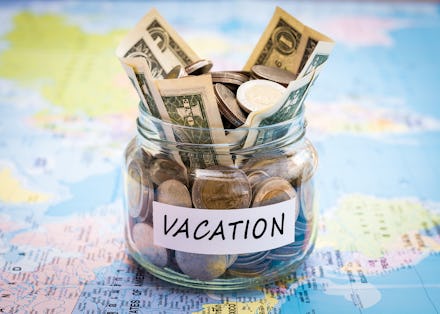How to save for your dream vacation so it doesn’t break your budget

We’ve all heard the saying, “the best things in life are free.” But anyone who’s been stricken by wanderlust can agree travel is one of the best things in life — and it certainly isn’t free. In fact, taking vacations requires careful financial planning — though it seems many people miss that fact. According to LearnVest’s 2017 Money Habits and Confessions Survey, 55 percent of Americans either forgot or failed to account for vacations within their annual budgets. This year, make sure you’re not one of those people, and make sure you have enough money in the bank to travel the way you want. Here’s how:
Consider your other financial obligations and goals
The amount you will spend on travel should be determined in concert with the rest of your financial obligations and goals. “Saving for travel shouldn’t supersede putting money away for retirement or building an emergency fund,” said Erin Lowry, author of Broke Millennial Takes on Investing. As you plan your annual budget, start by accounting for your essential expenses and what you need to put away for emergencies.
Then, think about where a vacation lies on your priority list among other costs and financial goals. NerdWallet recommends a 50/30/20 budget breakdown based on your take-home income — 50 percent for necessities, 30 percent for wants, and 20 percent for savings. Travel would fall within the “wants” category, but how much of it that takes up depends on your personal preferences. “For some people, travel is a top priority, and that’s going to impact how much they’re willing to scale back day-to-day life in order to fund a trip,” Lowry said. “There is no hard-and-fast rule about what percentage of your monthly budget you should be setting aside for travel. Instead, it should be weighed against other short or medium-term goals you’re trying to achieve like paying off student loans, saving up to buy a home, adopting a dog, paying for a wedding [and] starting a family.”
Think about the type of trip you want to take
Once you know how much money you have to play around with, you can start to figure out an ideal amount to budget for your next trip. “This completely comes down to what you value and how much you can afford to spend on vacation,” Lowry said. “There’s nothing wrong with taking a lavish vacation as long as you can pay for it and it isn’t incurring any debt.”
She recommended first identifying “what your dream vacation is and be as specific as possible.” From there, research costs associated with specific destinations or types of trips — including average flight, accommodation, meal, and activity costs — to get an idea of how much you need to save. As a jumping off point, you can check out ValuePenguin’s Average Cost of a Vacation breakdown, which is based on data from the Bureau of Labor Statistics. The breakdown shows Americans’ average vacation cost-per-day ($144 per night for a 4-night domestic trip and $271 per night for a 12-night international trip) as well as average total trip expenditures for transportation, lodging, food/alcohol, and entertainment.
If the total savings goal you land on for your dream vacation is a little high, look for places you can cut back, both before and during the trip. “For example, can you find ways to cut the cost of the flight so there’s more money to spend when you arrive?” Lowry said. “Do you need to stay in a luxury accommodation or would you prefer to have extra money to spend on restaurants and exploring? You can also see if there are ways to hack [travel] costs...to have a lot more cash to spend when you arrive.” If you need even more of a boost, consider the possibility of a side hustle (like driving an Uber or offering creative services on a freelance basis) and additional sources of income (like selling clothes you never wear).
Commit to saving
It’s one thing to say you’ll save a certain amount for travel; it’s another thing to actually do it. Your best bet is to make it a routine part of your monthly budgeting. “Travel is a priority for me, so I’ve always had a dedicated travel savings account,” Lowry said. “Each month, we put money away into our travel savings account so that there’s a healthy buffer ready to go whenever we want to take a trip.” If you don’t want to take the step of opening an entire new savings account just for travel, get in the habit of putting a portion of every paycheck (your travel savings goal for the year divided by the number of paychecks you get) into your savings account before you can spend it on something else. If you don’t end up spending the entirety of what you saved on a trip this year, you can roll it over and have even more available for epic travel experiences next year.
According to LearnVest’s Money Habits and Confessions Survey, 74 percent of people have gone into debt (an average of $1,108) to pay for a vacation. But financial experts warn, no matter how important travel is to you, it’s crucial to only spend on it what you can truly afford. Lowry warned against financing vacations on credit cards. While it’s perfectly fine to pay for a trip with your credit card if you pay the bill in full and on time, she noted, “financing a vacation with a credit card means you’re putting yourself into debt and owing interest on the vacation you took.”
“Credit card debt is brutal and can take years to pay off,” Lowry added. “Your vacation needs to be paid outright. Otherwise, you could be spending years paying it off and therefore disrupting your ability to achieve other financial goals.”